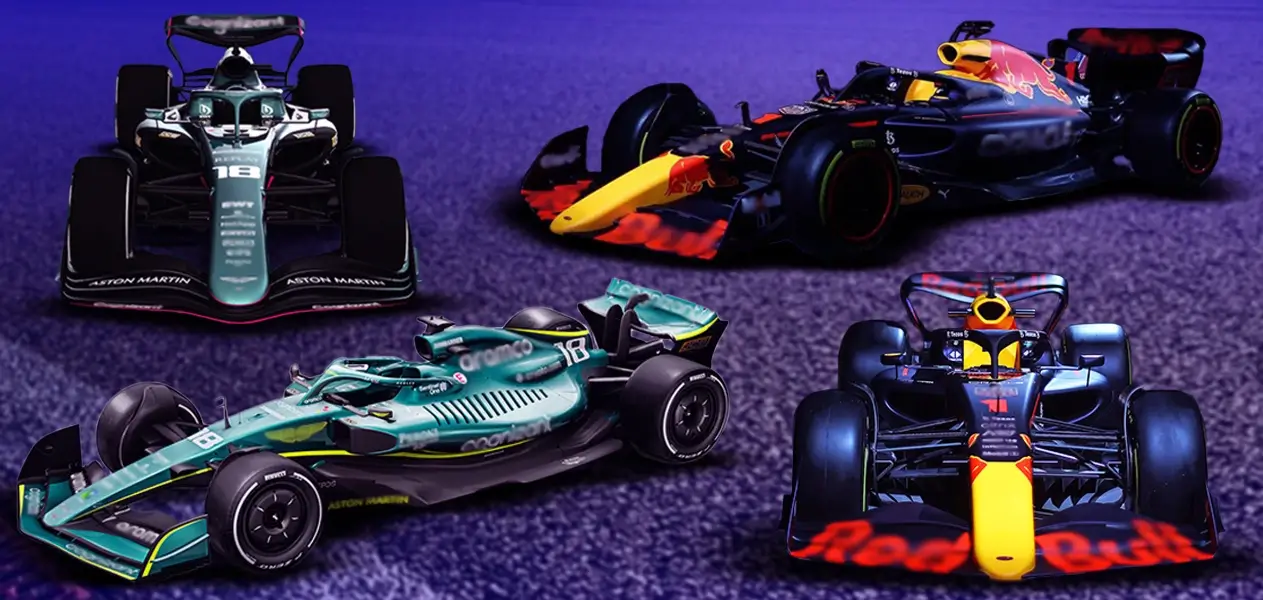What’s new with the 2022 Formula One cars?
The new era of Formula One is knocking on the door. With each team slowly revealing their challengers for the upcoming season, we have gotten our first views of the new-generation cars.
With the new regulations set to kick in from the upcoming season, we take a look at the 2022 cars which have been designed specifically to promote more wheel-to-wheel racing, making them different from their predecessors.
Also Read – 2022 F1 Predictions
Front wing
One of the first differences that one can spot between the 2021 and 2022 cars is the front wing. The front wing for the new-generation cars is of completely different shape. A more neutral design compared to the more technical ones, the new design is aimed at tackling the issue of heavy airflow disruption coming off the car in front while chasing.
The new front wing designs also don’t have the ‘Y250 vortex’ — the vortex between the inner tips of the front wing flaps which affects the airflow while following a car. With the inner tips no longer there, chasing a car is going to be a lot easier.
Body
One of the most significant and visible changes between the new-generation and old-generation cars is the bodywork in general. The 2022 cars are much leaner. The cooling exit louvres on the bodywork—which were banned after 2008—are also set to return from the 2022 season onwards.
Also Read – F1: 2022 Formula One Driver Line-up
Floor
The floor of the 2022 cars is very different from the previous ones. The floor has fully-shaped underfloor tunnels and not the stepped floor of the turbo-hybrid era. The underfloor tunnels will help the teams generate large amounts of ground effect downforce.
The different floor shape will allow the cars to generate more downforce through the ground effect. This will also bring down the downforce impact for a car following another and produce less turbulent airflow for the chasing cars.
It is reported that the 2022 car will lose only 4% downforce when it is inside 20 metres of a car in front and 18% at 10 metres, which is a big jump from the current 35% at 20 metres and 47% at 10 metres.
Rear Wing
The rear wing of the new-generation car is another one which has undergone a major change. With rolled-up tips compared to the previous straight endplates, the rear wings are designed to have the aerodynamic airflow go over the car rather than going into it. This will help the drivers follow other cars better, something that has been tough in the turbo-hybrid era.
Tyres and wheels
One of the most significant changes that are being made in 2022 is the change in wheels. Formula One will be moving on from its 13-inch wheels to the 18-inch ones.
Along with larger wheels, there has also been the re-introduction of the wheel cover. The wheel cover will keep the airflow clean but also limit the team’s work on the tyres aerodynamically.
Another introduction to the wheels section is the over-wheel winglet, which is designed to help maintain clean airflow.
Weight
This is something that, even though the fans can’t see, is a crucial change. The new cars will be almost 5% heavier than the previous ones, going up from 752kg to 790kg.
Given that the new wheels and tyres are heavier (14kg heavier) as well, the new cars are set to be heavier in weight than before. Along with that, the additional safety requirements will also be adding to the weight of the cars.
Fuel
Another feature, which although isn’t a change in the car, is the fuel used by the cars.
While the 2021 cars ran on fuel which contained 5.75% bio-components, the new-regulation cars will be running on 10% bio-component. Teams will be shifting to a new ‘E10 fuel’ which has 10% ethanol.
The switch to ethanol confirms the sport’s move towards a fully sustainable fuel in the future, which will leave a near-zero carbon footprint.


